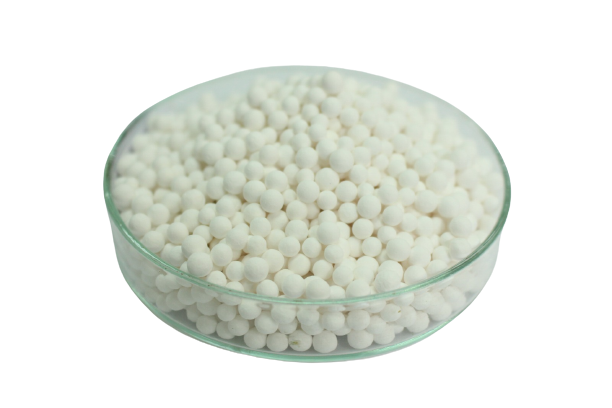Activated Alumina
Activated alumina is a highly porous adsorbent material with a large specific surface area, making it an effective choice for adsorption. It possesses high porosity, excellent thermal stability, and surface activity. When molecules penetrate the pores of activated alumina, they form strong interactions and can only be released through high-temperature heating.
Highly Porous Adsorbent Material
In air-drying systems, activated alumina exhibits a remarkable moisture absorption capacity. It remains structurally intact when exposed to water without swelling, shrinking, or softening.
Activated alumina can release trapped water molecules when heated to 200 °C, making it suitable for removing chemicals such as fluoride, arsenic, and sulfur from gas streams. Its high surface area (350m²/g) allows it to effectively adsorb gases like acetylene, oxygen, and methane and fluids such as benzene, freon, hydraulic oils, kerosene, transformer oils, and vegetable oils.
Effectively Eliminates Pollutants
Activated alumina is crucial in pressure swing and heatless dryer systems, ensuring a continuous dry air supply with a moisture content below -70°C dew point. This is essential for safely transporting volatile gases, as gases like propane must be dried to prevent equipment corrosion and potential leaks.
Additionally, activated alumina is a protective agent that removes corrosive acids and safeguards valuable equipment. It is used in dehydration and purification processes to produce hydrogen peroxide, natural gas, and gasoline. Furthermore, it finds wide application in water purification for domestic, municipal, and industrial purposes, effectively eliminating pollutants like lead, arsenic, and fluoride from drinking water.
- High porosity
- Excellent thermal stability
- Moisture adsorption
- Chemical removal
- Versatile adsorbent
- Protective agent
- Dehydration and purification
- Eliminates pollutants
- Prevent equipment corrosion and potential leaks
Activated Alumina Product Brochure - Humi Pak Malaysia: Download


